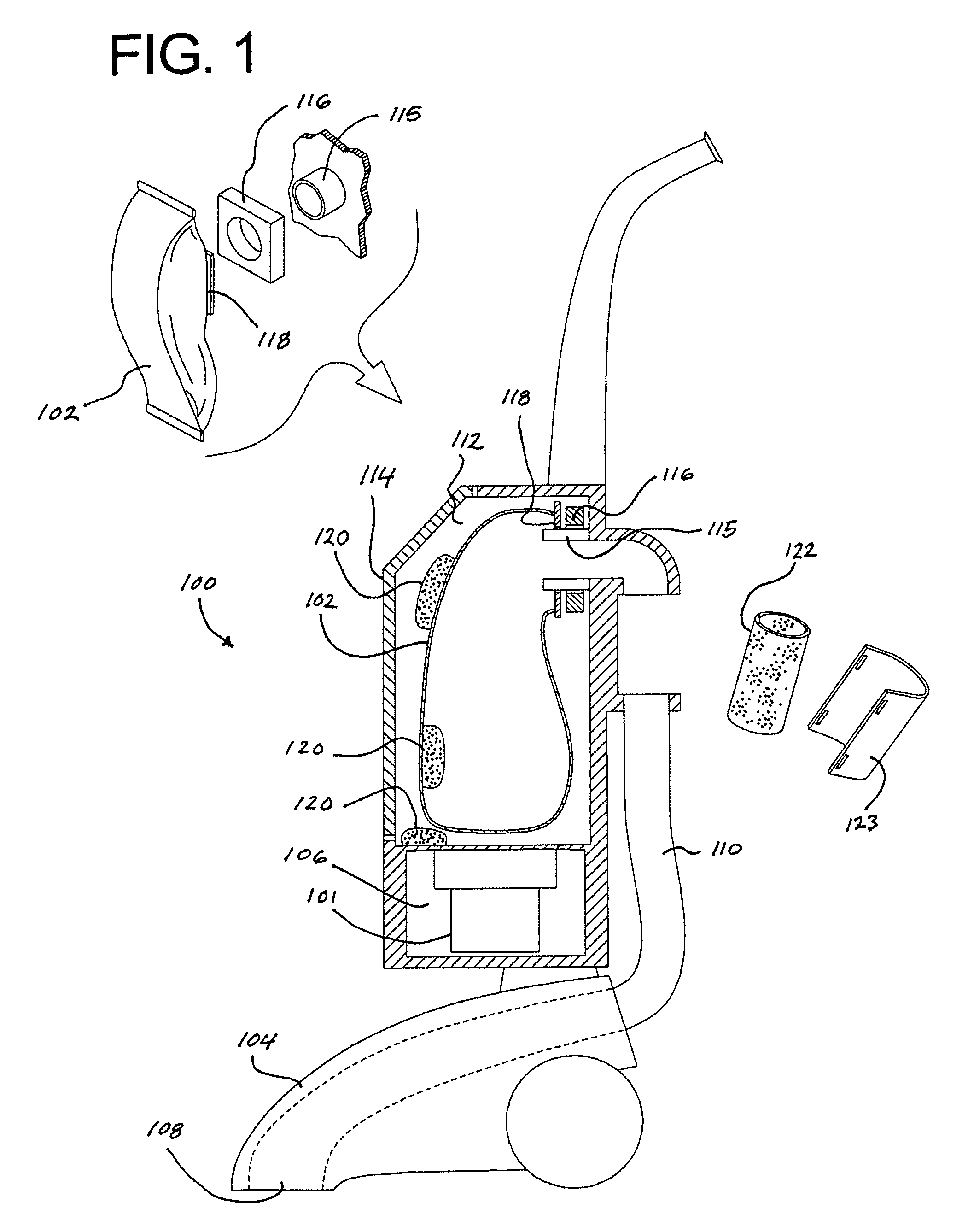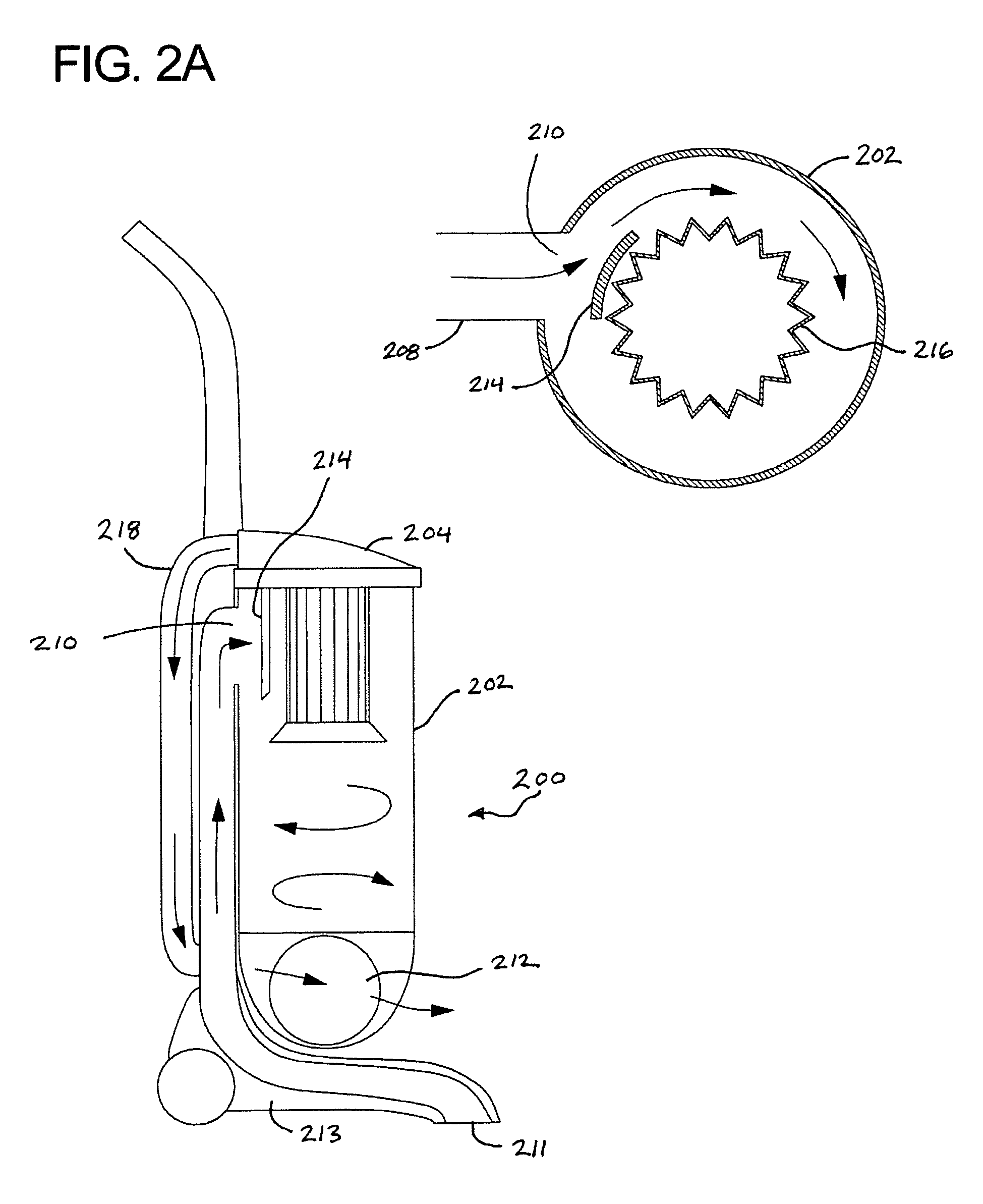Sodium bicarbonate vacuum bag inserts
a vacuum bag and sodium bicarbonate technology, applied in the field of vacuum cleaners, can solve the problems of odors, customer dissatisfaction with the device, and odors that may also present a perceived health risk
- Summary
- Abstract
- Description
- Claims
- Application Information
AI Technical Summary
Benefits of technology
Problems solved by technology
Method used
Image
Examples
example 1
[0146]Tests were conducted using Eureka Model 402 vacuum cleaners. The Eureka Model 402 vacuum cleaners were bagless and contained a cone shaped filter within the dust cup. A control filter was compared to a treated filter. The control filter was a standard untreated filter. The treated filter contained the deodorizing device of the present invention.
[0147]The deodorizing device included the deodorizing composition disposed between two nonwoven gas porous materials. The deodorizing composition contained about 91.5% sodium bicarbonate, 3.5% zeolite and 5% adhesive (GRILTEX™) and was coated on a 6.25 in.×6.25 in. size filter at a coating level of 8.7 oz / yd2, (0.19 g / in2). The first nonwoven material was a moldable polyester having a fabric weight of 3.2 oz / yd2 (108.5 g / m2); tensile strength in the machine direction of 25 lbs; tensile strength in the cross-machine direction of about 75 lbs; and thickness of 74 mils (1.88 mm). The first nonwoven material served as the bottom layer of th...
example 2
[0155]Odor levels were measured in a sensory panel comparing a control sample to two treated samples. The odor studied in this test was 100 grams of damp vacuum cleaner dust. The tests were conducted by disposing the odors inside a 2 quart enclosed space.
[0156]The control sample had only the odor in the container. The two treated samples had the odors in the container and the deodorizing devices of the present invention where 7.4 grams of the deodorizing composition were loaded between two 6.25 in. square pieces of nonwoven material. The first “treated” sample contained 88% sodium bicarbonate, 7% Smellrite@, and 5% GRILTEX™ hotmelt on the nonwoven material. The second “treated” sample contained 91.5% sodium bicarbonate, 3.5% zeolite and 5% adhesive on the nonwoven material.
[0157]Eighteen panelists smelled the odor inside the 2-quart enclosed space and rated the smells on a 0 to 6 scale for malodor. A rating of 0 represented the least odor, a rating of 6 represented the most odor. Th...
PUM
| Property | Measurement | Unit |
|---|---|---|
| thickness | aaaaa | aaaaa |
| thickness | aaaaa | aaaaa |
| thick | aaaaa | aaaaa |
Abstract
Description
Claims
Application Information
 Login to View More
Login to View More - R&D
- Intellectual Property
- Life Sciences
- Materials
- Tech Scout
- Unparalleled Data Quality
- Higher Quality Content
- 60% Fewer Hallucinations
Browse by: Latest US Patents, China's latest patents, Technical Efficacy Thesaurus, Application Domain, Technology Topic, Popular Technical Reports.
© 2025 PatSnap. All rights reserved.Legal|Privacy policy|Modern Slavery Act Transparency Statement|Sitemap|About US| Contact US: help@patsnap.com



